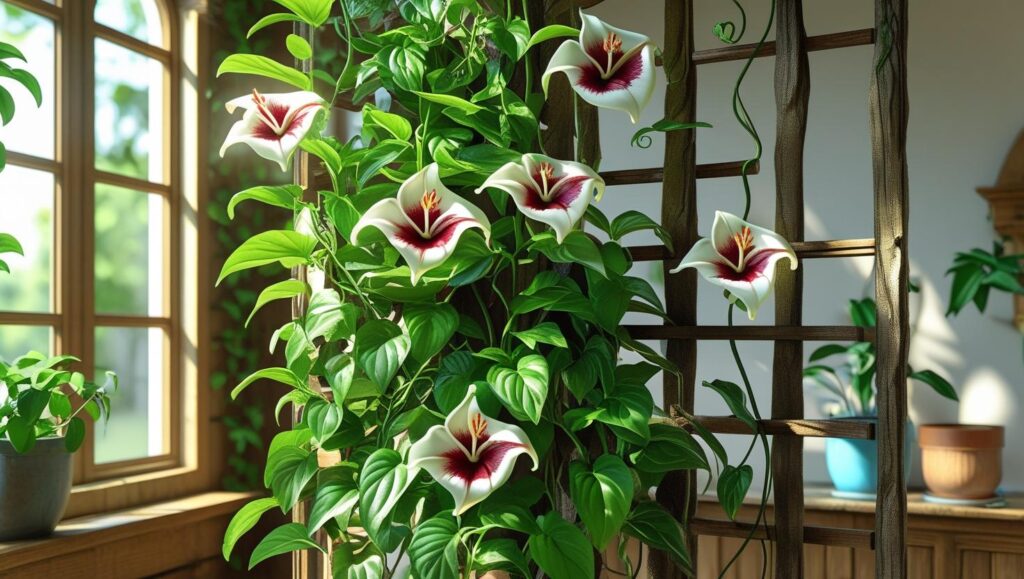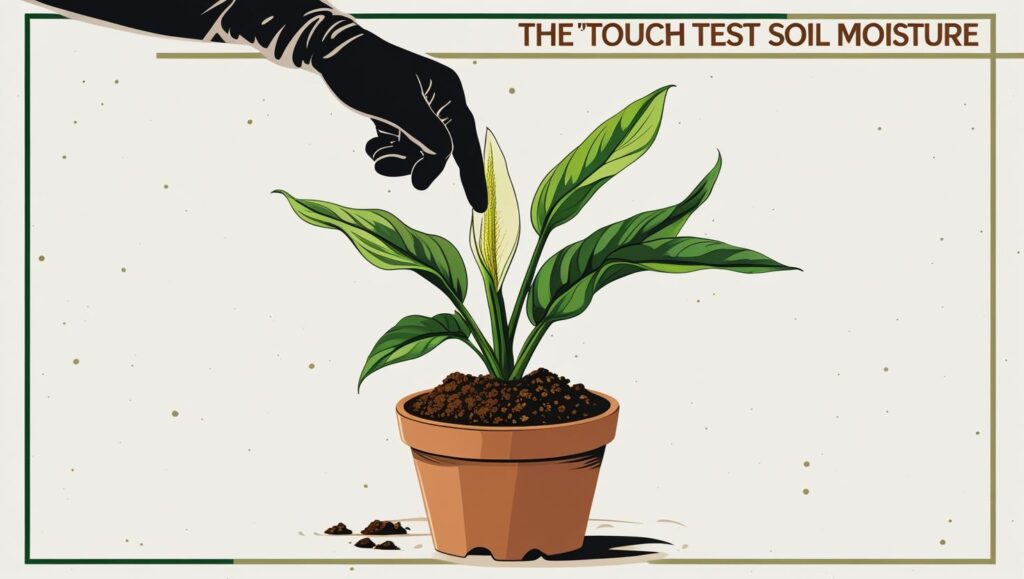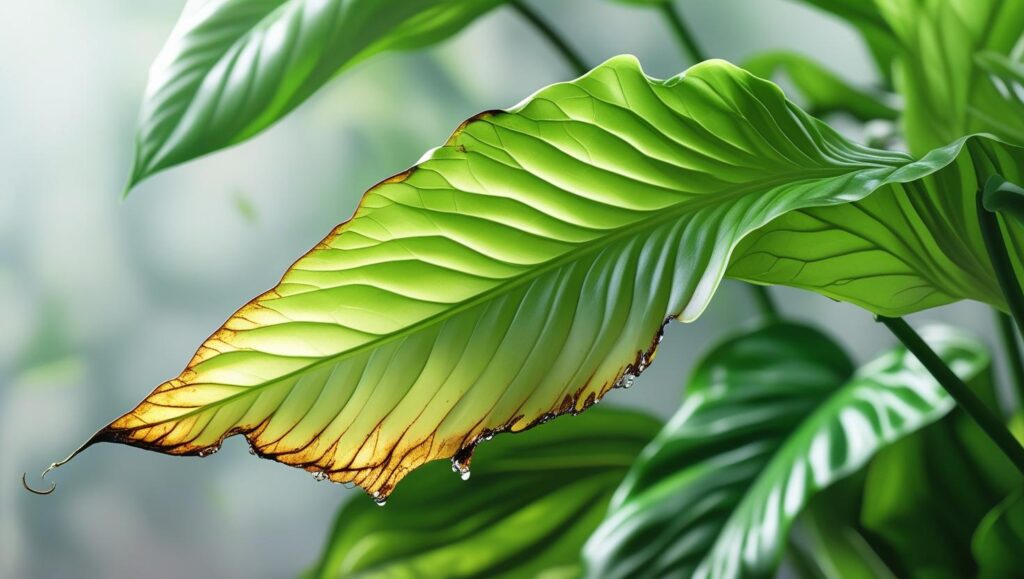Properly watering a Peace Vine (Strophanthus preussii) is the most critical factor in ensuring its health and encouraging its stunning, fragrant blooms. For most growers, the key is not to adhere to a rigid schedule, but to assess the plant’s needs based on its environment. Understanding the delicate balance between sufficient moisture and the risk of root rot will allow this exotic tropical vine to flourish.
This guide provides detailed, authoritative advice on watering practices and overall care for the Peace Vine, helping enthusiasts cultivate this beautiful but sensitive plant successfully.

Key Peace Vine Care Insights
| Key Aspect | Detail |
| Watering Frequency | Water when the top 1-2 inches of soil are dry. |
| Light Requirement | Bright, indirect sunlight for at least 4-6 hours daily. |
| Soil Type | Well-draining, slightly acidic potting mix (pH 6.1-6.5). |
| Toxicity | All parts of the plant are highly toxic if ingested. |
Properly watering a Peace Vine (Strophanthus preussii) is the most critical factor in ensuring its health and encouraging its stunning, fragrant blooms. For most growers, the key is not to adhere to a rigid schedule, but to assess the plant’s needs based on its environment. Understanding the delicate balance between sufficient moisture and the risk of root rot will allow this exotic tropical vine to flourish.
This guide provides detailed, authoritative advice on watering practices and overall care for the Peace Vine, helping enthusiasts cultivate this beautiful but sensitive plant successfully.
How Often Should You Water a Peace Vine?
The primary rule for watering a Peace Vine is to check the soil moisture before adding water. As a general guideline, you should water the plant thoroughly when the top one to two inches of soil feel dry to the touch.
During the active growing season in spring and summer, this may mean watering every 5-7 days. In the dormant fall and winter months, when the plant’s growth naturally slows, you may only need to water every 10-14 days. However, these intervals are highly dependent on several environmental factors.
According to horticultural experts at various university extension programs, the “touch test” is far more reliable than a fixed calendar schedule. To perform the test, simply insert your finger into the soil up to your first or second knuckle. If the soil feels dry, it’s time to water. If you feel moisture, it is best to wait another day or two and check again. Overwatering is a common and often fatal mistake for this species.
Proper Watering Technique
When you do water, do so thoroughly. Add lukewarm water slowly and evenly to the soil surface until it begins to drain from the pot’s drainage holes. This ensures that the entire root ball is hydrated. After watering, empty any excess water from the saucer or tray beneath the pot. Allowing the plant to sit in standing water is a primary cause of root rot, a fungal disease from which a Peace Vine may not recover.

Key Factors Influencing Watering Frequency
Your specific environment plays a significant role in determining how often you should water a Peace Vine. Adjusting your routine based on these four factors is essential for Strophanthus preussii care.
1. Light Exposure
A Peace Vine that receives several hours of bright, indirect sunlight will use water more quickly than one in lower light conditions. More light fuels more photosynthesis and growth, increasing the plant’s water uptake.
2. Temperature and Humidity
As a tropical plant, the Peace Vine thrives in warm and humid conditions. In hotter, drier air, water will evaporate from the soil and transpire from the leaves more rapidly. If your home has low humidity, especially in winter when heating systems are on, you may need to water more frequently or supplement with a humidifier.
3. Soil Composition
The type of potting mix is crucial. Peace Vines require a well-draining soil that retains some moisture but doesn’t become waterlogged. A mix containing peat moss, perlite, and pine bark is ideal. Dense, heavy soils like standard garden dirt will hold too much water and can lead to root suffocation and rot.
4. Pot Size and Type
Plants in smaller pots will dry out faster than those in larger ones. The material of the pot also matters. Terracotta or clay pots are porous and allow water to evaporate through their walls, causing the soil to dry out more quickly. Plastic or glazed ceramic pots retain moisture for longer.
Beyond Watering: Essential Peace Vine Care
While watering is critical, a holistic approach to care will yield the best results, encouraging lush growth and the development of its unique, pinwheel-like flowers.
Light and Location
Place your Peace Vine in a location where it can receive at least four to six hours of bright, indirect light per day. An east-facing window is often ideal. While it needs bright light to flower, direct, intense afternoon sun can scorch its leaves, causing them to turn brown and crispy.
Soil, Fertilizer, and Repotting
Use a high-quality, well-aerated potting mix. According to the Missouri Botanical Garden, this plant prefers a slightly acidic soil pH. Repot your Peace Vine every two years or when it becomes root-bound.
Feed the plant with a balanced liquid fertilizer diluted to half-strength every two to four weeks during the spring and summer growing season. Do not fertilize during the fall and winter when the plant is dormant.

Troubleshooting Common Issues
- Yellowing Leaves: This is most often a sign of overwatering. Check the soil moisture and allow the plant to dry out more between waterings.
- Drooping Leaves: Drooping can be a sign of both over- and underwatering. If the soil is wet and the leaves are drooping, it’s likely root rot. If the soil is bone dry, the plant is thirsty and should recover soon after a thorough watering.
- Pests: Keep an eye out for common houseplant pests like spider mites and mealybugs, especially in the crevices where leaves meet the stem. Treat any infestations promptly with insecticidal soap or neem oil.
A Critical Warning on Toxicity
It is vital for growers, especially those with children or pets, to know that all parts of the Strophanthus preussii are extremely toxic if ingested. The plant contains cardiac glycosides, potent toxins that affect heart function. The sap can also cause skin irritation. Always wear gloves when pruning or handling the plant and place it well out of reach of children and animals.
As this flowering vine matures, providing a trellis or other support structure will encourage healthy upward growth. With careful attention to its watering needs and overall environment, the Peace Vine can be a rewarding and spectacular addition to any plant collection, offering unique beauty and fragrance.
How Often Should You Water an Aloe Vera Plant? Experts Say Less Is More
